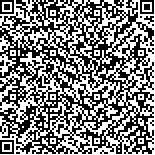王梁,卢红建,朱冬燕,等.小脑间歇性θ脉冲刺激联合下肢外骨骼机器人对脑卒中患者平衡和步行功能的影响[J].中华物理医学与康复杂志,2025,47(8):693-698
扫码阅读全文

|
| 小脑间歇性θ脉冲刺激联合下肢外骨骼机器人对脑卒中患者平衡和步行功能的影响 |
|
| |
| DOI:10.3760/cma.j.cn421666-20240805-00637 |
| 中文关键词: 小脑间歇性θ脉冲刺激 下肢外骨骼机器人 脑卒中 平衡功能 步行功能 |
| 英文关键词: Cerebellum stimulation Intermittent θ pulse stimulation Exoskeleton robots Stroke Balance Walking Rehabilitation robots |
| 基金项目:江苏省卫生健康委科研项目(M2021106);南通市卫生健康委科研课题(QNZ2024027) |
|
| 摘要点击次数: 966 |
| 全文下载次数: 770 |
| 中文摘要: |
| 目的 探讨小脑间歇性θ脉冲刺激(iTBS)联合下肢外骨骼机器人对脑卒中患者平衡和步行功能的影响。 方法 采用随机数字表法将75例脑卒中伴下肢功能障碍的患者分为iTBS组、外骨骼组和联合组,每组患者25例。3组患者均接受常规康复训练,在此基础上,iTBS组增加小脑iTBS联合传统步行训练,外骨骼组增加假小脑iTBS联合下肢外骨骼机器人辅助步行训练,联合组则增加小脑iTBS联合下肢外骨骼机器人辅助步行训练。小脑iTBS(或假小脑iTBS)、传统步行训练和下肢外骨骼机器人辅助步行训练均为每日1次,每周治疗5 d,连续治疗3周。于治疗前和治疗3周后(治疗后)采用10 m步行计时测试(10MWT)、Berg平衡量表(BBS)、Fugl-Meyer运动功能评定量表下肢部分(FMA-LE)分别评估3组患者的步行能力、平衡能力和下肢运动能力,同时对患者进行步态和神经电生理检测。 结果 治疗后,3组患者的10MWT、BBS评分、FMA-LE评分、步频和步速较组内治疗前均显著改善(P<0.05),外骨骼组和联合组的10MWT、BBS评分、FMA-LE评分、步频和步速均显著优于iTBS组(P<0.05),且联合组的的10MWT、BBS评分、FMA-LE评分、步频和步速均显著优于外骨骼组,差异均有统计学意义(P<0.05)。治疗后,3组患者MEP的潜伏期和波幅较组内治疗前均显著改善(P<0.05),外骨骼组和联合组MEP的潜伏期和波幅均显著优于iTBS组(P<0.05),且联合组MEP的潜伏期和波幅分别为(21.25±1.70)ms和(184.17±6.54)μV,均显著优于外骨骼组,差异均有统计学意义(P<0.05)。 结论 小脑iTBS联合下肢外骨骼机器人可显著改善脑卒中患者的下肢运动功能、平衡功能和步行能力。 |
| 英文摘要: |
| Objective To explore the effect of combining intermittent θ pulse stimulation (iTBS) of the cerebellum with lower extremity exoskeleton robot support on the balance and walking function of stroke survivors. Methods Seventy-five stroke survivors complicated with lower extremity dysfunction were divided into an iTBS group, an exoskeleton group and a combined group, each of 25, according to a random number table. In addition to conventional rehabilitation training, the iTBS group was given cerebellar iTBS combined with traditional walking training, the exoskeleton group received sham cerebellar iTBS combined with walking training assisted by a lower extremity exoskeleton robot. The combined group received both therapies. The schedule was once a day, 5 days a week for 3 weeks. Before and after the treatment, the 10-metre walking test (10MWT), the Berg Balance Scale (BBS) and the Fugl-Meyer lower extremity assessment (FMA-LE) were used to evaluate the subjects′ walking ability, balance and lower extremity motor ability. Gait and neuro-electrophysiological tests were also conducted in all three groups. Results After the treatment, a significant improvement was observed in the 10MWT times, BBS scores, FMA-LE scores, stride frequency and stride speed of all three groups compared with before the treatment. On average, the results of the exoskeleton and combined groups were significantly better than those of the iTBS group, and those of the combined group were significantly better than among the exoskeleton group. Almost everyone′s MEP latency and amplitude had improved significantly compared with before the treatment, but the improvements in the exoskeleton group tended to be superior to those in the iTBS group (P≤0.05). The latency in the combined group averaged (21.25±1.70)ms, and the amplitude averaged (184.17±6.54)μV, both significantly better than the exoskeleton group′s averages. Conclusions Cerebellum iTBS combined with lower extremity exoskeleton walker training can significantly improve the motor functioning, balance and walking ability of stroke survivors. |
|
查看全文
查看/发表评论 下载PDF阅读器 |
| 关闭 |
|
|
|